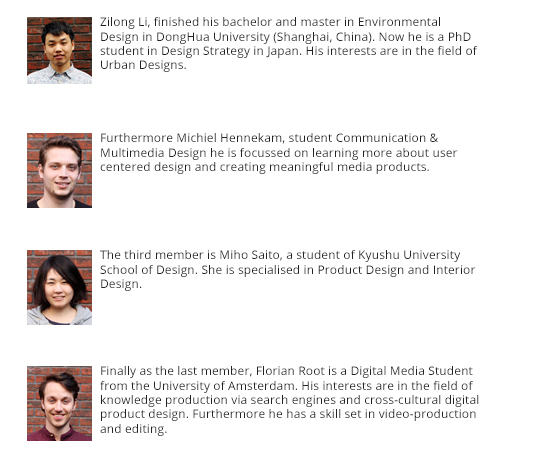We define distraction as consisting of two different parts, meaningful and meaningless distraction. The way we define it is through their relation to the completion of the task at hand. This can better be described as a current activity. This is because a task cannot be seen simply as a moment in time but more as a process from beginning to end. A distraction can be described as meaningful when the significance of the distraction is greater than the significance of the current activity. When this is not the case, and the significance of the current activity is greater than the significance of the distraction, we define this as meaningless distraction. In earlier work is outlined which distractions and (self)interruptions have negative effects on ongoing work tasks and what these negative effects are. Among others these effects are errors, work delay, stress and context-switching costs.
These meaningless distractions decrease productivity of the current activity because the energy it takes to regain the loss of concentration is greater than the result of the distraction. Note, this does not mean the productivity in general decreases, the productivity can be unchanged due to the fact that the meaningful distraction might influence the productivity of the current activity but this loss can be made up for when encountering in the meaningful distraction. If the significance of the current activity is equal to the significance of the distraction, we are in a balanced state. This has no or close to no influence on the general productivity or the productivity for the specific activity.

From the field research we conducted we found the two types of distraction as depicted above. What we noticed is that some distractions are unavoidable distractions, for instance a question of a team-member or colleague who needs an answer or even help that stretches further than the answering of a question. These assumptions are also based on scientific research on this subject. From one of the sources we examined [2] we found also that there are different sorts of stimuli that result in distraction. Self-interruptions as an example also occur when deliberately and consciously a user disrupts him- or herself by for example sending an email in between tasks or during a task or also physically moving to get a cup of coffee.
What we found from all this is that not all distractions are caused by external stimuli and not all distractions are per se negative, meaning they negatively influence the continuation of a task or hold back productivity.
- Jin, J., & Dabbish, L. A. (2009, April). Self-Interruption on the Computer: a Typology of Discretionary Task Interleaving. In Proceedings of the SIGCHI Conference on Human Factors in Computing Systems (pp. 1799-1808). ACM.
- Mark, G., Iqbal, S., Czerwinski, M., & Johns, P. (2015, February). Focused, Aroused, but so Distractible: Temporal Perspectives on Multitasking and Communications. In Proceedings of the 18th ACM Conference on Computer Supported Cooperative Work & Social Computing (pp. 903-916). ACM.
A bold statement. Yes. But after a lot of discussion on this subject this was the result. Let’s take a walk on the discussion and thought side of things.
The flexible workspace was invented as a reaction on the cellular office-plan, cubicles and the closed working environment. Francis Cuthbert “Frank” Duffy, a British architect focussed on office landscaping and office-design started remodeling the working environment and especially the physical layout of the office. The reason for redesigning the physical workspace would be the lack of collaboration and longevity of it for advances in information technology. Cellular offices would connote and promote individual, unproductive, ideas. As a result initially British offices started to transform into open and flexible offices where collaborating is key and with the rise of flexible working times the open-office became a flexible office. At least, so do people say.
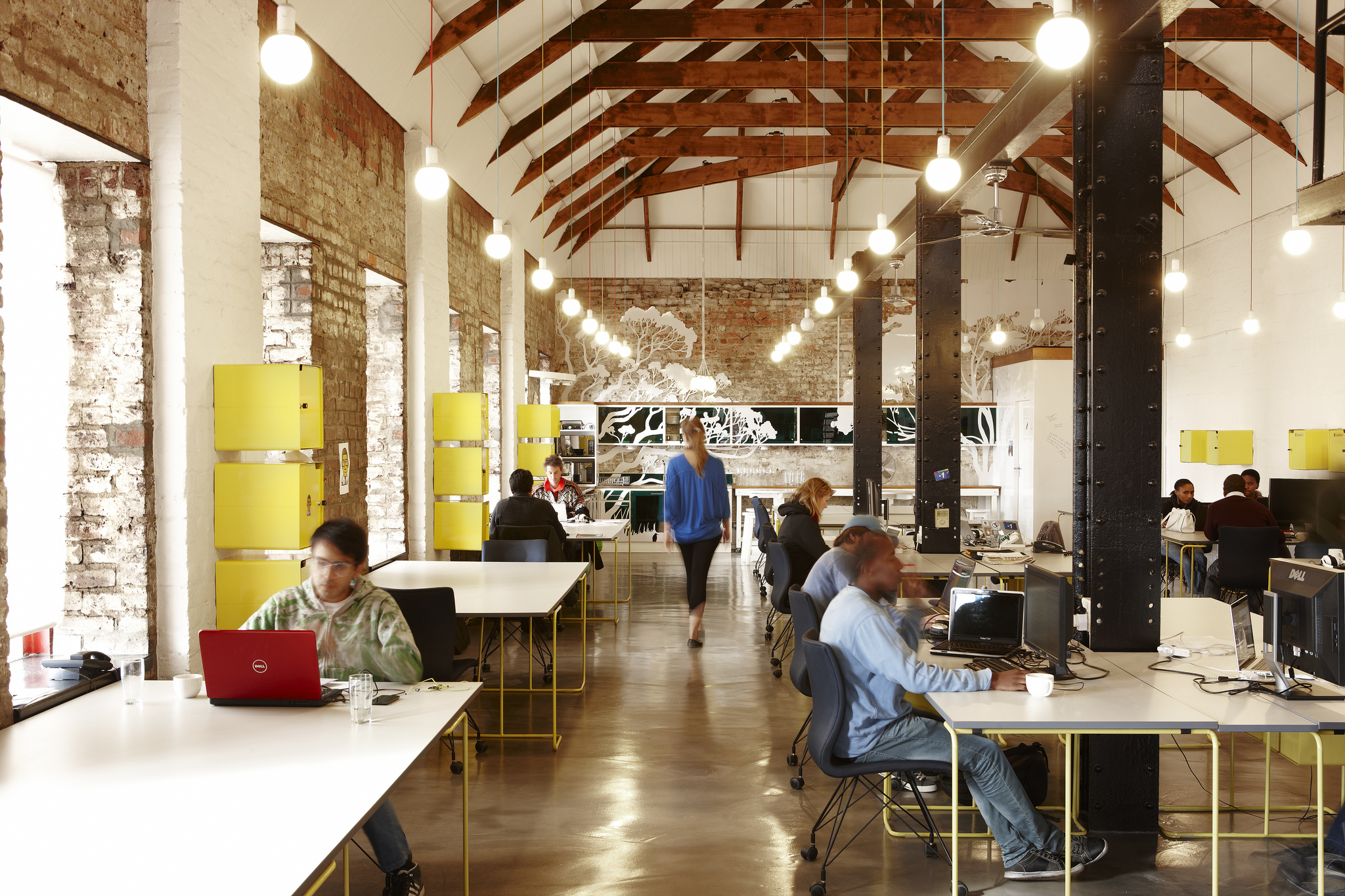
When researching this transition from cellular to flexible open office spaces we found that a flexible workspace as it is described in many articles and on Wikipedia, is a space where collaboration thrives and anyone is able to sit anywhere.
“Teamwork that fosters positive group dynamics is essential to organizational effectiveness in complex, computer-based work environments. (Robertson et al. 2008)”
What other offices who adapted to this ‘new’ way of working don’trealize was that it is specially designed for computer-based-working environments and not just for any company. In theory the idea connotes a space where anyone can sit at any desk at any specific time as long as it’s available. On the other hand what we found contradicted the idea of the flexible workspace. We found that within a company dynamic and -culture there are a lot of unspoken rules and laws. One of them we would like to call the familiarity effect. When a worker generally works in the same spot he or she gets used and familiar to that spot. This is limits the idea and effect of the flexible workspace. This is the reason that there is no such thing as a flexible office space pur sang. Just the idea or ‘illusion’ of one.
When developing prototypes for a problem that you define it is hard to stick to the single problem you defined at the beginning. The subject of the ageing society and the result, which is a large diversity of employees with different needs and problems, is one of immense size. Interview the target group and you will come across hundreds of problems which can’t be addressed all at once. So what do we do? PRIORITIZE and start prototyping.
We came across three main problems when it comes to distraction, visual privacy, noise/sound and social media.
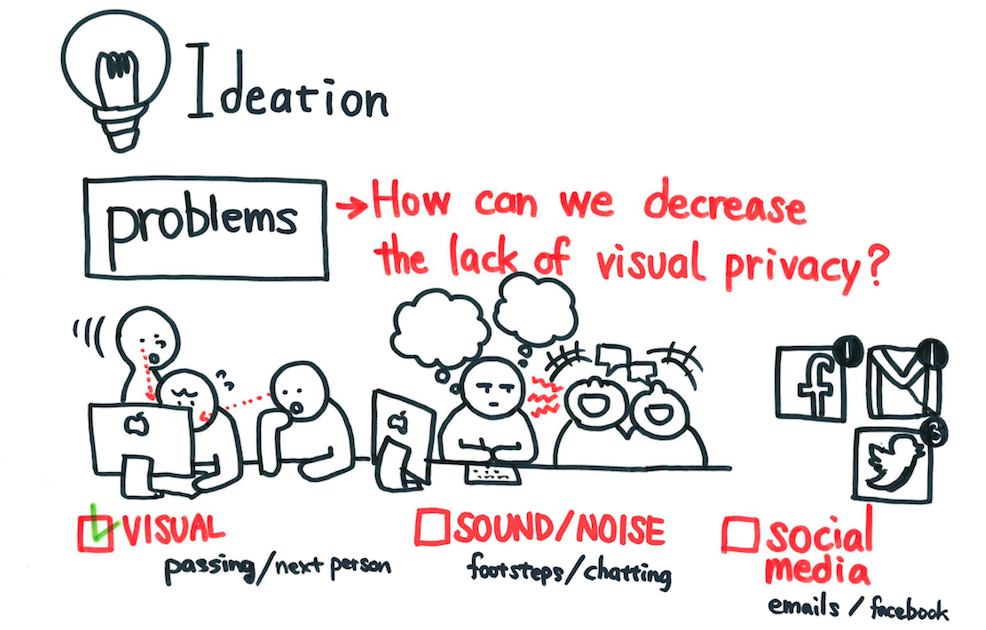 In conducted field-research which consisted of interviews we found that social media is only distracting when it comes to people who grew up in the era of social media and smartphones. Older respondents didn’t seem to bother much about this issue. The visual aspect of privacy and the noise around them were the most distracting factors.
In conducted field-research which consisted of interviews we found that social media is only distracting when it comes to people who grew up in the era of social media and smartphones. Older respondents didn’t seem to bother much about this issue. The visual aspect of privacy and the noise around them were the most distracting factors.
As of yet we are creating an experiment where we try to alter the attitude of workers towards each other and their environment to minimize the distraction, among others, caused by passing people, chatting people, music that is being played and collaboration in general to maximize concentration and thus productivity. By grouping people together and make them aware of their environment and co-workers we hope to spark the need to take others’ type of work and the needs in order to complete this satisfactory into account. Will they alter their behaviour and see that it will benefit them as well? Or will they stick to their own habits because it’s easy to?
Meaning is created through experience and thus in most situations meaning is subjective. This is a bold statement and although many linguists who believe meaning is arbitrair would argue the opposite, there are also theorists specialized in the field of the famous nature-nurture debate who say that there are many ways of looking at meaning and the way we as humans are formed by and form meaning (which I will not contradict). It is interesting to see how this is solidified in the world of design. Let’s look at an example how a meaning and relation and also feeling with and through design is constituted. When looking at a beautiful design, the way we constitute a feeling and a rich experience is formed and shaped by the contrast to other experiences we have in life. The ‘richness’ of the experience through a design (or any other experience in life) is formed through comparison with other types of experiences. Designers and design-scholars agree to an extent that they believe that design can be used as a tool to invoke positive behaviour and emotions. Some scholars also believe that negative design can produce these same feelings (Fokkinga & Desmet 2013).
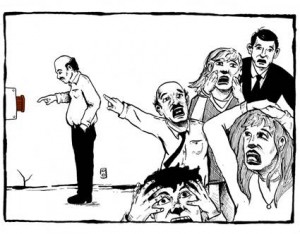
- http://cdn.ttgtmedia.com/rms/dataCenter-Virtualization/redbuttonsmall.jpg
When thinking about an easy way to explain all the different possible negative designs that are out there, one is relatable to by everyone. The red button. And with the red button I mean the red coloured button which states “don’t push this button”. THAT red button. While we are intrigued by that red button, we are indulged by it in a sense that it liberates us from a seduction that is irresistible. We perceive this button as something we want to indulge in but shouldn’t do because of social norms or because we know that it might not be good for us. As a result we might see this button as something we know we want to push but shouldn’t because if we do our safety might be in jeopardy. This is a form of negative design that can be described as intriguing but the only thing is that one might say this does not create a ‘richer’ experience.
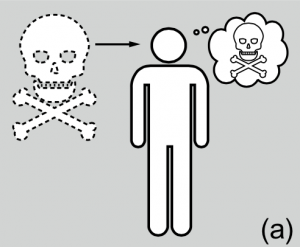
- Fokkinga, Steven F., and Pieter MA Desmet. “Ten ways to design for disgust, sadness, and other enjoyments: A design approach to enrich product experiences with negative emotions.” IJD International Journal of Design, 7 (1), 2013 (2013).
An example of a negative design with a richer experience can be a violent video game like the widely popular GTA (Grand Theft Auto) in which you play a character that can do everything you can do in real life but from which the result of your actions doesn’t effect real life, say crash a car or rob people. This is a sadistic emotion that at the same time can create a richer experience for the user. users perceive the world full of attractive opportunities that beg to be tried out and do things they wouldn’t normally do because it is all in a playful and less serious manner. This is because the designer created a distance between the game and real life, this is called a ‘detachment frame’ as seen in the image above. This frame can be either mental or physical to keep the user from danger.
How can we use this in our project? it is a way of thinking that starts from the negative aspects that a design can provoke, we can look at the problem of distraction in the workplace as the main factor of disturbance and influence on productivity for example. How can we create a mental or physical barrier for the worker so that distraction might still exist but doesn’t influence the worker? We don’t have to SOLVE problems we come across but we can also make the effects unnoticeable.
In comparison to our previous post about doing in-depth specific research, this time let’s talk about inclusive design. Inclusive design can be described as a way of (commercial) design by which you try to include as many people while designing. Opposed to designing from the specific to the generic you try to design for an audience as big as possible to produce a product or service that is usable by many and in which there is no need for specialized design.
While discussing different design processes with professor Yasuyuki Hirai from Kyushu University, Faculty of the Design, we came across different pointers when comparing this to our translate session just two days before with professor Jeremy Myerson. They both agree on the importance of the user and doing user-centered
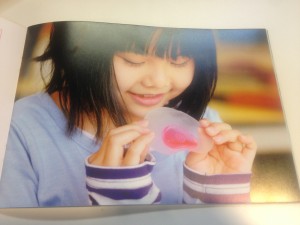
research and designing, but it seems that professor Hirai puts a noteworthy amount of time and thought into making design user-friendly. He does this by defining not just the problem of a user or target-group, but the S.O.S., the underlying layer of different aspects of a problem which define the REAL problem. An example: When designing a cup for a person with a disability who isn’t able to lift the cup, the underlying problem is not him being unable to lift the cup, but the disabled person wants to feel like he or she isn’t dependent on other people. To get to this problem statement, one must not look at the initial ‘problem’ but at the S.O.S. by doing field research in the way Myerson described previous session.
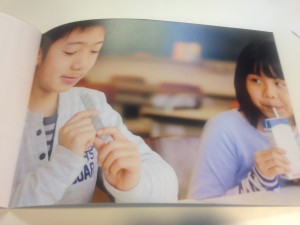 Kids X Medicine X Design
Kids X Medicine X Design
To give another example, professor Hirai worked on a project which combines kids, medicine, and design. The goal was to design a product or service that allowed kids in Japan to ‘enjoy’ taking medicine. Multiple solutions were presented. They came up with a plastic container containing fruit-flavoured jello in which the medicine could be inserted to make the swallowing more comfortable. Designs in the shape of a heart, and also designs that make it seem that children are drinking out of a straw so that the medicine-taking went unnoticed by other children were developed. The S.O.S. resulted in a W.O.W., transforming the problem into a solution provided by the design of the product. Noticeable is also that this design won the Good Design Award 2008 of Japan in the category Innovation – Pioneering and experimental design activities.
These examples show the power of design and especially the importance of qualitative user-research to define the real problems,the real S.O.S.
To reflect on the previous post on the people-centered approach, we had a translate-session with someone who, in 2012, was in the top 100 of the Wired Magazine’s list of most influential people in digital technology, or the digital-power brokers as they like to call it. His name is Jeremy Myerson, director of the Helen Hamlyn Centre for design in London, UK. With his people-centered approach on design he inspired us a lot when discussing about technology, the project, and especially the approaching of the issue at hand.
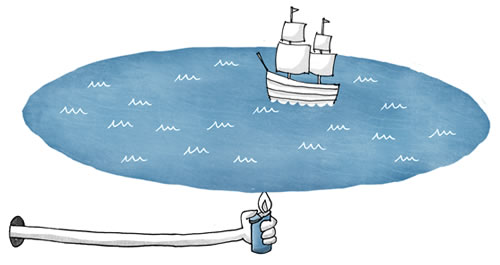
- Source: http://alwaysinfo.co.uk/images/i/don-39t-boil-the/5
One of the simplest but at the same time most important things we discussed was described in the phrase “Don’t try to boil the ocean”. We should define the problem in the most simple sense to eventually let the solution evolve from a specific into a generic one. When observing knowledge workers in their environment with ethnographic research we will stumble upon multiple annoyances, multiple opinions on multiple subjects, when focussing on a few of those feelings that are connected to the working environment, meaning the physical environment, the IT-devices and the management culture within the workspace we can uncover the real ‘issues’ at hand and design something useful for these issues.
Today we had a fruitful discussion concerning the way in which we approach our project. There are so many variables that influence the working environment for as well the younger as the older employees that we should think of ways to approach the situation. One way we found is the ‘easy-way-out’, looking at the working environment and analyzing it through the space, a spatial approach as you will. Solutions result in a Google-like office as Google real-estate and workplace staff show and explain in the Startup Lab Workshop: Workspace Design. What they shortly touch on is the subject of people-centered approach.When connecting this method to our research and project we can see this as a way of trying to regulate the mood of staff and altering their behaviour.
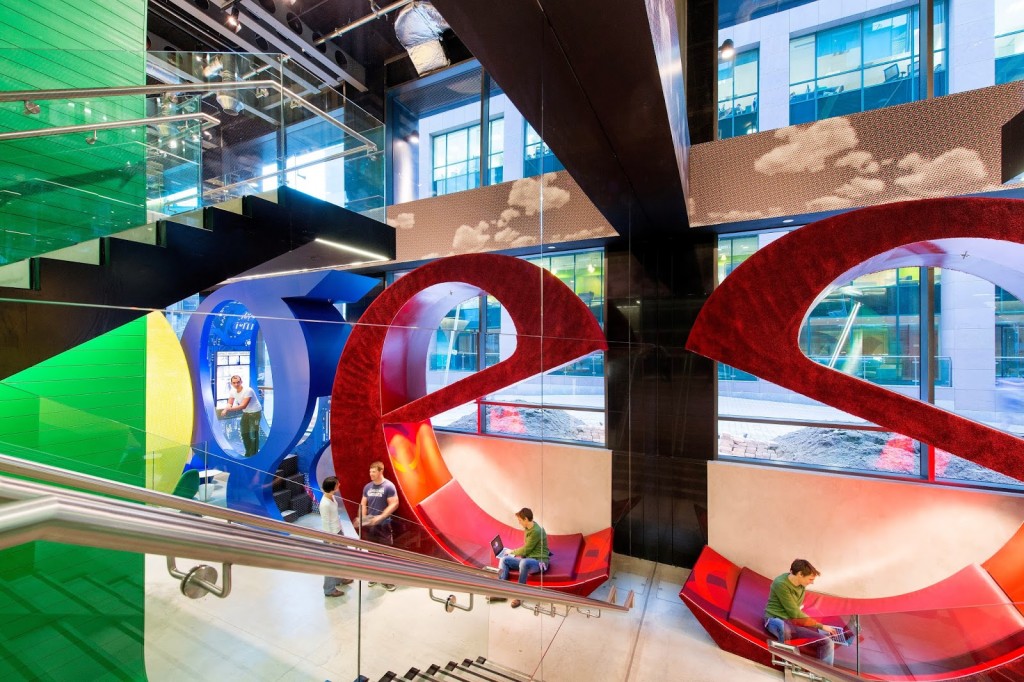
- Source: http://www.decoradvisor.net/tags/office-entrance-interior-design/
Let us backtrack for a second, there are two ways of looking at the problem and especially the solution,
- Redesigning the workplace
- Redesigning behaviour/mood IN the workplace
We can see a change in the concept of the office where the traditional form and shape needs to be re-evaluated. This redesigning can be done spatially as illustrated in the first example above, change the physical workplace. What is more interesting is thinking of the solution not being the redesigning of the workplace but redesigning the way people behave or feel in the workplace and experience the workplace. This way we look at the solution from a people-centered perspective which makes surrounding factors like the layout of the office or the proximity of a coffee place of secondary importance. Note, this is just a way of looking differently at the problem, we do not state that surrounding factors are of no importance because obviously when you don’t experience nuisance if has a positive effect on your experience of the workplace.
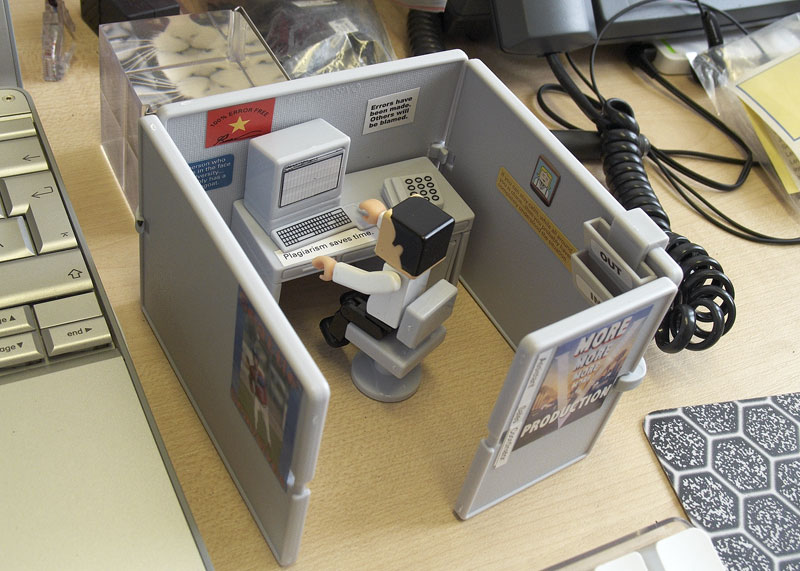
- Under CC License
Defining a user and types of workspaces is a challenge. When defining the workspace we can think of the workspace in its traditional form and shape, the cubicle as you see in the picture on the right. After doing some research there are multiple ways of looking at the workSPACE and workPLACE. The workplace is not anymore a fixed physical place where people have designated desks. The definition workplace has become one that can be interpreted in different ways. More and more people work from home, at coffeeplaces, and there are distinctions to be made in different types of workspaces as well. A way to differentiate is by using the physical space and person-density as the common denominators as Kim & Dear (2013) have done. [1]
To make their article more understandable we visualized their findings to uncover the bottlenecks and problems different sorts of offices face.

We found that the aspects of the working environment that most influence the worker are the ‘sound privacy’. This can be defined as the ability to have conversations without your neighbours overhearing and vice versa. Secondly the ‘noise level’ was one of the aspects that varied within different workspaces. Finally the ‘visual privacy’ which indicates the way others can see you while your working and vice-versa was a variable that was found to cause problems within some workspaces. The results “categorically contradict the industry accepted wisdom that open-plan layout enhances communication between colleagues and improves occupants’ overall work environmental satisfaction”. We see that there is a need for a reconceptualization of the issues surrounding the satisfaction level of the office space.
-
Kim, Jungsoo, and Richard de Dear. “Workspace satisfaction: The privacy-communication trade-off in open-plan offices.” Journal of Environmental Psychology 36 (2013): 18-26.
In our user-scene we introduce problems that are faced by old(er) workers who aren’t used to the same working conditions than the young(er) workers. We try to visualize this in a short film because this best highlights the current situation and its limitations on the workplace.
https://www.youtube.com/watch?v=-695LKd_fmU
Also underneath the storyboards of the user-scene which were later digitalized and some photos to sketch an image of how the process went.
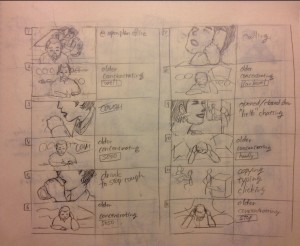
User-Scene – Storyboard Scene #1
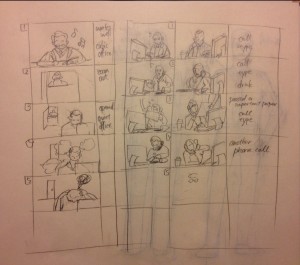
User-Scene – Storyboard Scene #2
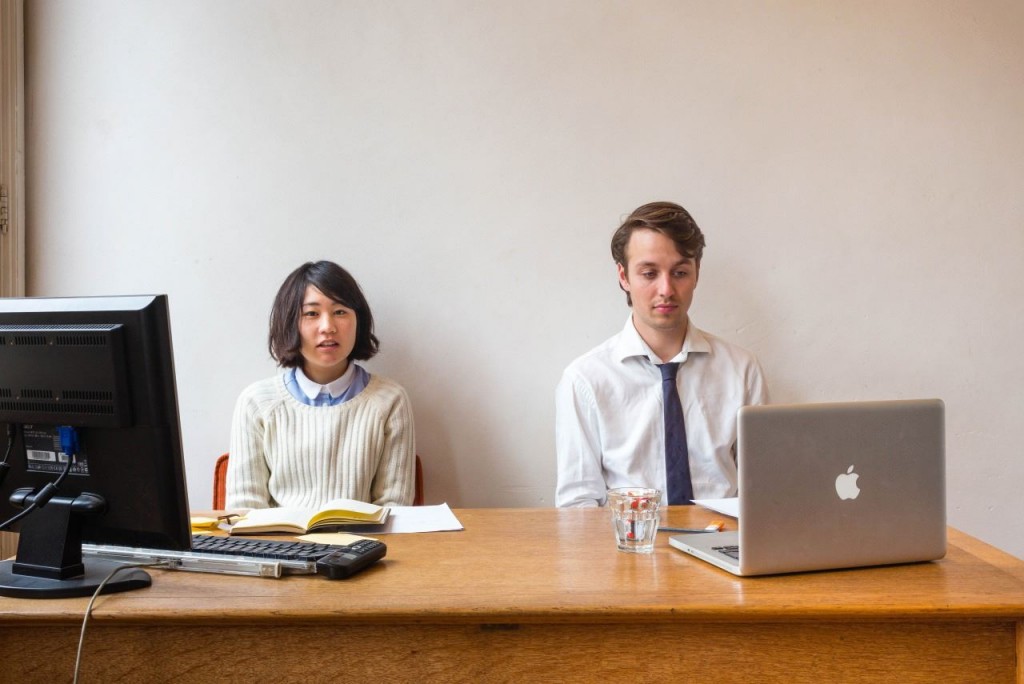
User-Scene – Storyboard Scene Still
There are four people in our team who will be working on this project:
Altogether, being a team from different cultures will give an interesting and also critical view on the project where different values and opinions are given a platform to come up with designs suiting a single goal. We are looking forward to tackling this challenge!














 Kids X Medicine X Design
Kids X Medicine X Design






